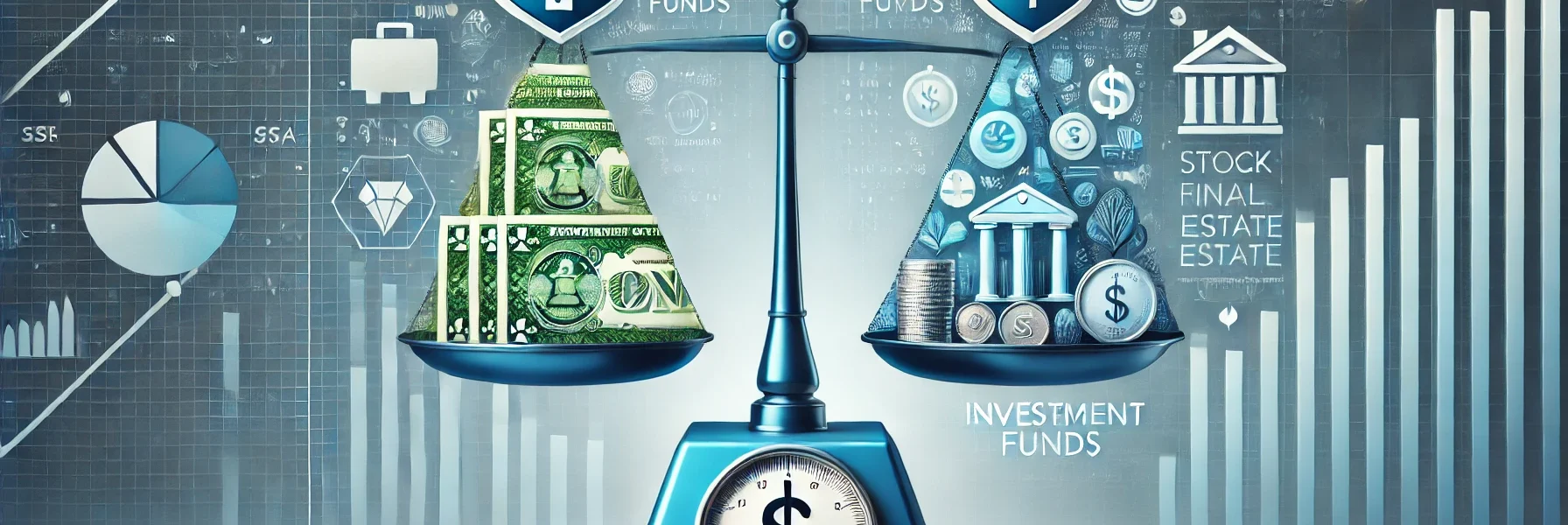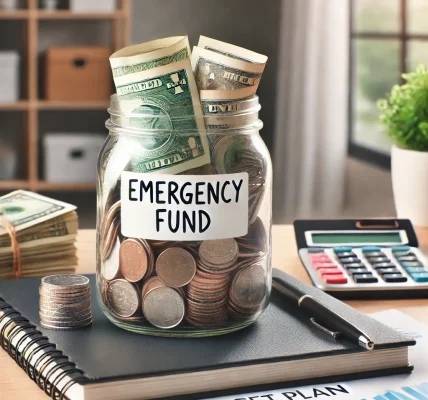In the world of personal finance, two critical pillars of financial security are emergency funds and investment funds. Each serves a unique purpose, and balancing both within your budget is crucial to maintaining financial stability while growing wealth. Many individuals struggle to prioritize between saving for emergencies and investing for future goals. This comprehensive guide will walk you through the differences, importance, and strategies for managing both in your budget effectively.
Understanding Emergency Funds and Investment Funds
Before diving into strategies for balancing these funds, it’s essential to understand their definitions and functions:
- Emergency Fund: This is a cash reserve set aside to cover unexpected expenses like medical emergencies, car repairs, or job loss. It is meant to provide financial security and prevent the need to rely on credit during crises.
- Investment Fund: This is the portion of your budget dedicated to growing your wealth over time. It includes contributions to assets like stocks, bonds, mutual funds, or real estate with the goal of achieving long-term financial growth and meeting future goals.
Why You Need Both Funds
A well-rounded financial plan includes both emergency and investment funds. Here’s why both are essential:
- Emergency Fund Benefits:
- Provides a financial safety net during unforeseen situations.
- Helps you avoid high-interest debt or liquidating investments during emergencies.
- Offers peace of mind and financial independence.
- Investment Fund Benefits:
- Helps you build wealth and achieve long-term financial goals.
- Takes advantage of compound interest to maximize returns.
- Allows you to plan for retirement, education, or significant life milestones.
How Much Should You Allocate to Each?
The balance between emergency and investment funds depends on your personal financial situation, risk tolerance, and life stage. Here are general guidelines:
- Emergency Fund Size: Aim to save 3-6 months’ worth of essential expenses. If you have an irregular income or dependents, consider increasing it to 9-12 months.
- Investment Contribution: Financial experts recommend allocating at least 15-20% of your monthly income toward investments. Adjust this percentage based on your financial goals and risk profile.
Step-by-Step Guide to Balancing Emergency and Investment Funds
1. Assess Your Financial Situation
Start by evaluating your current income, expenses, and savings:
- Calculate your monthly essential expenses (housing, food, insurance).
- Identify how much you already have in savings.
- Review any existing investments and their performance.
2. Build a Solid Emergency Fund First
Prioritize establishing a basic emergency fund before aggressively investing. Without this safety net, you risk derailing your financial plan if an unexpected expense arises.
- Start with a goal of saving $1,000 as a starter fund.
- Gradually increase to 3-6 months of living expenses.
- Keep the emergency fund in a high-yield savings account for easy access.
3. Create a Balanced Budget
Use a budgeting method to allocate funds toward both goals. Two effective approaches include:
- 50/30/20 Rule: Allocate 50% to needs (including emergency savings), 30% to wants, and 20% to investments and other savings.
- Zero-Based Budgeting: Assign every dollar of your income to a specific category, ensuring both emergency and investment funds are covered.
4. Automate Savings and Investments
Automating your contributions ensures consistency and removes the temptation to skip payments.
- Set up automatic transfers to your emergency fund after each paycheck.
- Use investment platforms that allow automatic, recurring investments.
5. Prioritize Tax-Advantaged Investment Accounts
Maximize your investment potential by utilizing tax-advantaged accounts:
- For Retirement: 401(k), IRA (U.S.), NPS (India).
- For Education: 529 Plan (U.S.).
- For Healthcare: HSA (U.S.).
Always be aware of contribution limits and tax implications to stay legally compliant.
6. Rebalance as Your Finances Evolve
Regularly revisit your budget to adjust for life changes and financial growth.
- Reassess your emergency fund annually to account for rising expenses.
- Increase investment contributions as your income grows.
- Adjust the allocation during major life events (marriage, parenthood, career changes).
Common Mistakes to Avoid
- Neglecting Emergency Savings: Prioritizing investments without a financial cushion can lead to debt during crises.
- Overfunding Emergency Savings: Keeping too much cash in a low-yield account may reduce long-term growth potential.
- Inconsistent Contributions: Skipping regular savings or investment contributions undermines financial goals.
- Ignoring Inflation: Ensure both your emergency and investment funds account for rising living costs over time.
Finding Your Unique Balance
The right balance between emergency and investment funds depends on your lifestyle, goals, and financial stage. Consider these personalized strategies:
- If You’re Starting Out: Focus on building a 3-month emergency fund while contributing a smaller percentage (5-10%) to investments.
- Mid-Career Professionals: Maintain a 6-month emergency fund and aim for 20-25% investment contributions.
- Approaching Retirement: Prioritize liquidity for emergencies while safeguarding your investment portfolio for stability.
Legal Considerations and Best Practices
- Document Everything: Maintain detailed records of all contributions and withdrawals.
- Stay Compliant: Follow regulations regarding tax-advantaged accounts and reporting requirements.
- Seek Expert Advice: Consult a financial planner or tax advisor for personalized, compliant strategies.
Conclusion
Balancing emergency funds and investment funds is a fundamental aspect of financial health. By creating a thoughtful budget that prioritizes both, you safeguard your financial future while allowing your wealth to grow. With consistent effort, regular reviews, and a clear strategy, you can achieve a harmonious balance that supports both security and long-term financial success.
Start today by evaluating your current financial standing, setting realistic goals, and leveraging automation to maintain consistency. With a well-balanced approach, you will be well-equipped to handle emergencies while steadily growing your investments for a prosperous future.




